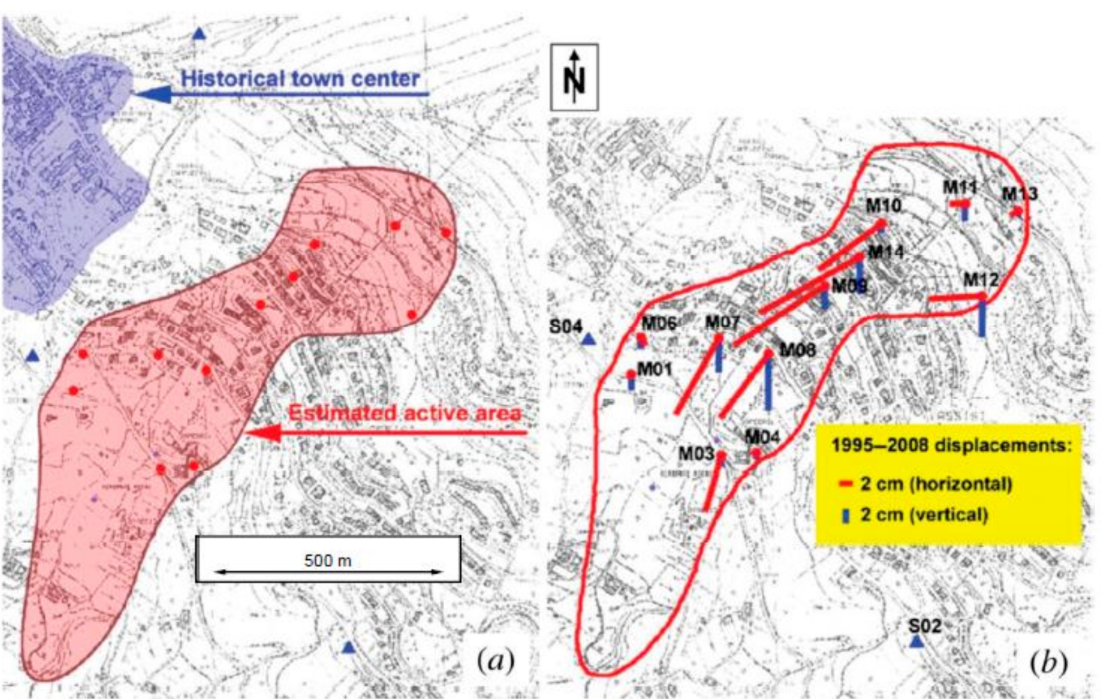Buscema, P.M.; Lodwick, W.A.; Asadi-Zeydabadi, M.; Newman, F.; Breda, M.; Petritoli, R.; Massini, G.; Buscema, D.; Dominici, D.; Radicioni, F. Twisting Theory: A New Artificial Adaptive System for Landslide Prediction. Geosciences 2023, 13, 115. https://doi.org/10.3390/geosciences13040115
Abstract
Landslides pose a significant risk to human life. The Twisting Theory (TWT) and Crown Clustering Algorithm (CCA) are innovative adaptive algorithms that can determine the shape of a landslide and predict its future evolution based on the movement of position sensors located in the affected area. In the first part of this study, the TWT and CCA will be thoroughly explained from a mathematical and theoretical perspective. In the second part, these algorithms will be applied to real-life cases, the Assisi landslide (1995–2008) and the Corvara landslide (2000–2008). A correlation of 0.9997 was attained between the model estimates and the expert’s posterior measurements at both examined sites. The results of these applications reveal that the TWT can accurately identify the overall shape of the landslides and predict their progression, while the CCA identifies complex cause-and-effect relationships among the sensors and represents them in a clear, weighted graph. To apply this model to a wider area and secure regions at risk of landslides, it is important to emphasize its operational feasibility as it only requires the installation of GNSS sensors in a predetermined grid in the target area.

